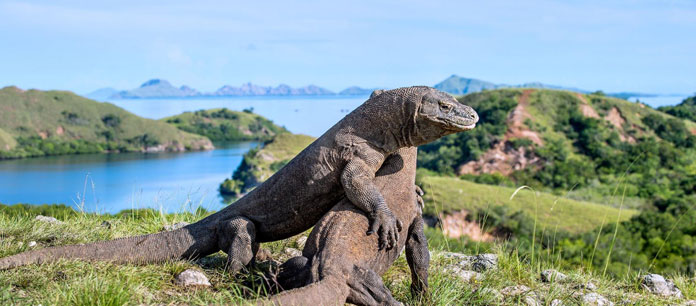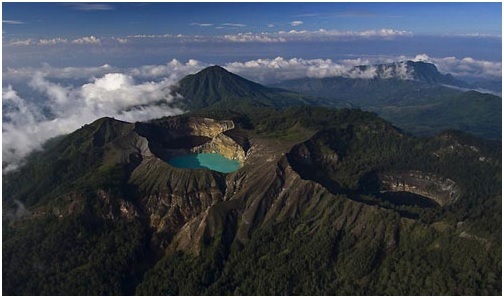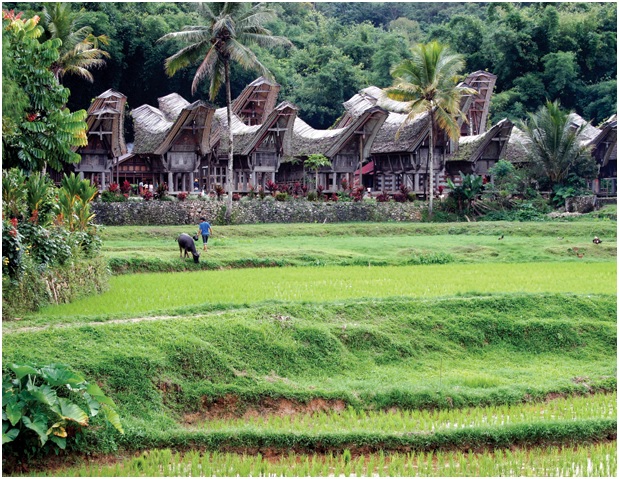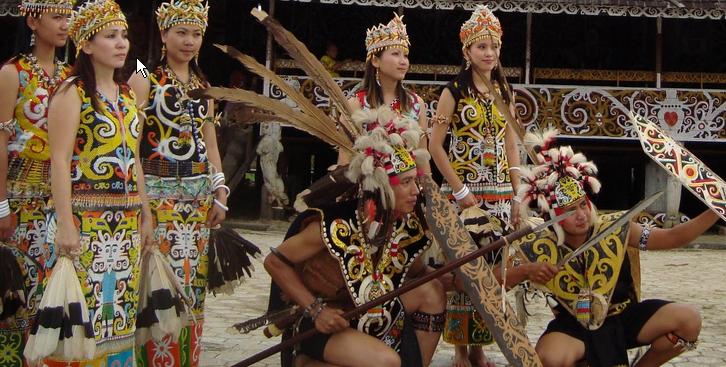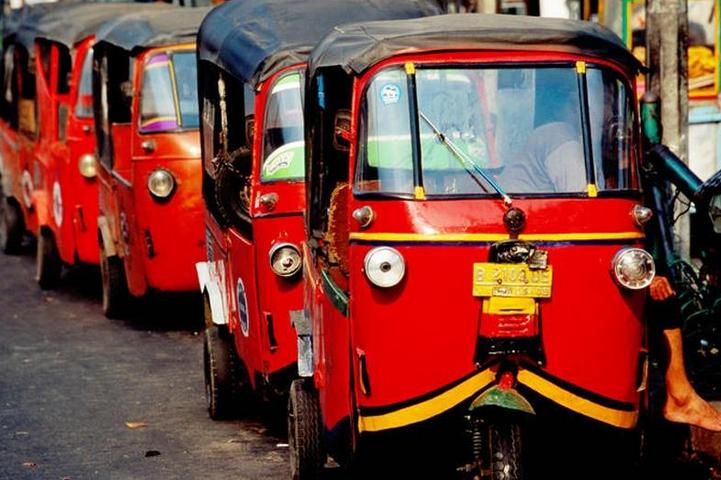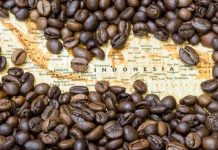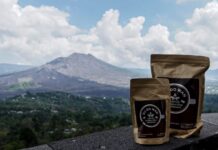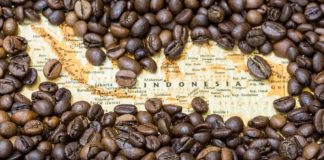As comfortable as metropolitan cities can be, travelling to a place with a completely different atmosphere will benefit your physical and mental state. Escape the crowds and discover Indonesia’s hidden gems—where pristine nature, ancient traditions, and unforgettable adventures await. These lesser-known destinations offer a chance to reconnect with nature, immerse in authentic cultures, and experience the raw beauty of the archipelago beyond the tourist trail.
- Komodo & Rinca
-
Why go? Home to the legendary Komodo dragons, these rugged islands offer wild landscapes and rare wildlife encounters.
-
Unique experience: Trek through savannas on Rinca Island (less touristy than Komodo) to spot dragons, deer, and exotic birds.
- Insider tip: Visit Padar Island for a breathtaking sunrise hike over tri-colored bays.These two small islands sandwiched between Flores and Sumbawa in eastern Nusa Tenggara are famous for their four-legged inhabitants – the ponderous Komodo dragons. The lizards can be quite fierce, and range from 20gm (0.7oz) pipsqueaks to 130kg (287lb) monsters. Non-squeamish visitors can watch organised feeding frenzies and join dragon-spotting treks on Komodo, but these can feel a bit stage-managed and gory. For a more do-it-yourself alternative, head for Rinca where there are no established feeding places so spotting monitors is more a matter of luck. Komodo is a hilly desolate island, but Rinca’s wildlife is fairly abundant – there are several monkey colonies, wild water buffalo, deer, bush turkeys and eagles. Ferries run to Komodo from Sape in Sumbawa and Labhuanbajo in Flores. To reach Rinca, you’ll need to charter a boat.
2. Flores
-
Why go? From the tri-colored Kelimutu lakes to traditional weaving villages, Flores is a land of mystery.
-
Unique experience: Wake up at dawn to see Kelimutu’s ever-changing crater lakes—turquoise, olive, and black—shrouded in legend.
-
Insider tip: Visit Bena Village for ancient megalithic traditions and stunning ikat textiles.
The villages of Nggela, Wolojita and Jopu on the island of Flores are renowned for their beautiful ikat sarongs and shawls. The traditional whaling village of Lamalera on Lembata in the Solor and Alor archipelago east of Flores is a fascinating place to poke around the boatsheds and watch men making harpoons. The villagers are subsistence whalers and are therefore exempt from international whaling bans. Keli Mutu’s tri-coloured lakes are Nusa Tenggara’s most fantastic attraction. The waters in the three volcanic craters have a curious habit of changing colour – most recently they were turquoise, olive and black, but a few years ago they were green-blue, maroon and black. No-one has managed to explain the cause of the colours or why they change, except to suppose that different minerals are dissolved in each lake. Local legend has it that the souls of the dead go to the lakes. Young people’s souls supposedly go to the warmth of the green lake, old people to the milky turquoise one, and those of thieves and murderers to the black lake.The only time to be sure of seeing the lakes from the 1600m (5248ft) high rim of the volcanic crater is at dawn before the clouds come down. Visitors negotiating the 13km (8mi) track from the nearby village of Moni can either walk, catch a ride on a truck or hire a jeep. If you’re tempted by the horses for rent, check their health and make sure they come with saddles.
3. Sulawesi – Land of Ancestral Rituals
-
Why go? Witness elaborate Torajan funeral ceremonies, cliff burials, and iconic Tongkonan houses.
-
Unique experience: Attend a buffalo sacrifice ritual (July–September) and learn about the Toraja’s deep spiritual beliefs.
-
Insider tip: Trek to Londa & Lemo burial caves, where wooden effigies guard the dead.
Most travelers head to the beautiful rugged hill country of Tana Toraja in central and southern Sulawesi, and the small town of Rantepao pulls in many of them. The rice-farming, pig-breeding, water-buffalo-loving Toraja who inhabit this region have become the focus of tourist attention thanks to their elaborate ceremonies, burial sites and traditional houses. Of all the Torajan ceremonies, the most important are those concerned with sending a dead person to the afterworld. Without proper funeral rites, the spirit of the deceased will cause misfortune to its family. Funerals can be spread out over several days and involve hundreds of guests and the sacrifice of scores of buffalo. Feasting, dancing and singing may be supplemented by cock-fighting, sisemba (kick-fighting) and even buffalo fights in which the bulls, rightly agitated by the insertion of chilli up their behind, lock horns and strain against each other.If you are invited to a ceremony, be sure to dress respectfully, bring gifts to hand around and don’t sit in areas designated for guests or family members. Taking photographs is acceptable, but do it with restraint. The best time to visit Rantepao is between March and May, though most funeral ceremonies are held in the `party season’ lasting from July to September. July and August is the high season and hotel prices skyrocket.The prosperous town of Manado, in northern Sulawesi, is renowned as the gateway to the stunning coral reefs off nearby Pulau Bunaken. There’s plenty of comfortable but basic accommodation on Pulau Bunaken and a number of low-key dive operators run services, though all the high-profile dive resorts are on the Sulawesi mainland. Much of the coral that once grew in Bunaken’s shallow water has tragically been decimated by careless boat traffic, but the nearest drop-offs are within swimming distance of shore and remain unscathed.You can hire dugout canoes or small motor boats to reach more isolated reefs around the nearby islands of Manado Tua, Pulau Siladen and Pulau Mantehage. A daily ferry connects Manado with Pulau Bunaken. Thankfully all the excitement isn’t offshore since Manado has a fascinating Indonesian-Philippines-Southern Californian hybrid culture, some very interesting local food (anyone for fried forest rat?) and spectacular volcanoes.
4. Kalimantan (Borneo) – Jungle Rivers & Dayak Culture
-
Why go? Cruise the Sekonyer River in Tanjung Puting National Park to spot orangutans, proboscis monkeys, and crocodiles.
-
Unique experience: Stay in a Dayak longhouse and learn about indigenous traditions in villages like Tanjung Isuy.
-
Insider tip: Visit Derawan Islands for untouched beaches and sea turtle nesting sites.
If you’re expecting to see half-naked, heavily tatooed Dayaks striding down the streets of Balikpapan or Pontianak, you’ll be disappointed, because your first impressions of Kalimantan, which occupies the southern two-thirds of the island of Borneo, are likely to be of oil refineries and timber mills. Timber and mining interests have penetrated deep into the jungles, bulldozing and chainsawing at an alarming rate, fouling rivers and leaving indigenous cultures reeling from the social and economic intrusions of the 20th century. The popular images of Borneo stem from the exaggerated accounts of early European explorers, though the stories surrounding Kalimantan’s inland Dayak villages are indeed the stuff of legend – tattooed head-hunters, `lost’ tribes and exotic wildlife. Samarinda is the best starting point for fascinating longboat river trips to villages such as Tanjung Isuy, Muara Muntai, Melak (with its 5000-acre orchid forest) and Long Iram, though unfortunately in some tourist precincts packs of visitors in search of an `authentic’ Dayak experience pay by the hour to see the `primitive cultures’. Tanjung Puting National Park, in central Kalimantan, is home to a vast variety of flora and fauna, including crocodiles, bear cats, orang-utan, monkeys and dolphins.The equatorial river city of Pontianak, in west Kalimantan, is best seen at sunset, when its backlit houseboats and sweeping river vistas make Balinese sunsets look pathetic. Make use of the canals to explore the city and soak up its Chinese-Indonesian atmosphere. In the evening, young men crowd the wobbly wooden boardwalks along the south bank of the river to fly huge paper kites. Highlights include the wooden Mesji Abdurrakham royal mosque and the Javanese and Sulawesi-style schooners in Pinisi Harbour. Pasir Panjang’s pristine beaches are close by, and the city is a great starting point for boat trips up the Kapuas.
5. Maluku – The Spice Islands
-
Why go? Once the world’s only source of nutmeg and cloves, these islands offer colonial forts, crystal-clear waters, and zero crowds.
-
Unique experience: Dive in the Banda Sea, one of the planet’s richest marine ecosystems.
-
Insider tip: Explore Banda Neira—a time-capsule of Dutch colonial history.
The thousand islands of Maluku (formerly the Moluccas) were the fabled spice islands of history, which attracted Indian, Chinese, Arab and later European traders, who came in search of the cloves, nutmeg and mace which grew here and nowhere else. Today these islands, sprawled across a vast area of ocean, offer tropical scenery with a Polynesian feel, exotic bird life, old forts, lovely villages and beaches, good snorkeling and diving, and no touts or pollution. Most visitors used to head for Ambon, the Bandas and Ternate, all stepping-off points for a swarm of tiny islands far from the tourist trail. But Ambon was rocked by communal violence in 1998 and 1999, tens of thousands of refugees have fled and it has fallen off the traveler’s circuit. You’ll need at least five weeks to explore the islands in any depth if you travel by boat; a minimum of three weeks if you intend to fly. It’s really best not to come here at all unless you throw away your watch before arriving.
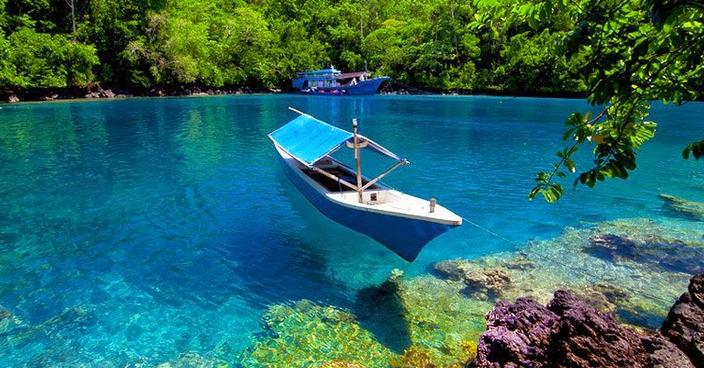
6. West Papua (Irian Jaya) – Tribal Cultures & Untamed Wilderness
-
Why go? Trek through the Baliem Valley, home to the Dani tribe, known for their traditional grass skirts and sweet potato farming.
-
Unique experience: Witness a Pig Feast (Babi Bakar) ceremony, a key part of Dani culture.
-
Insider tip: Visit Raja Ampat’s lesser-known islands for secluded diving spots.
Irian Jaya is one of the world’s last wilderness areas. Sharing its landmass with Papua New Guinea to the east, its people – the Papuans – are culturally and ethnically related to the Papua New Guineans and are similar to the Melanesians of the South Pacific. They live in some of the most rugged terrain on earth – from snowcapped mountains to mangrove swamps – in a region which offers fantastic jungle scenery, equatorial glaciers, abundant bird and animal life and great trekking opportunities. Highlights include the Baliem Valley with its unique culture and numerous treks; Sentani for boat trips around the magnificent Sentani Lake; and Kota Biak for access to dive sites. Don’t underestimate the size of Irian Jaya and the amount of time and money it will take to get around; there are no roads between major towns and boats are slow and irregular, so flying is often the only option. Incorporation into Indonesia, transmigration, and insensitive logging and mining have inflamed indigenous Papuans: a guerrilla force has been fighting for a Free Papua for well nigh 30 years – see the warning and be aware that permits from local police stations are required for travel to many areas.
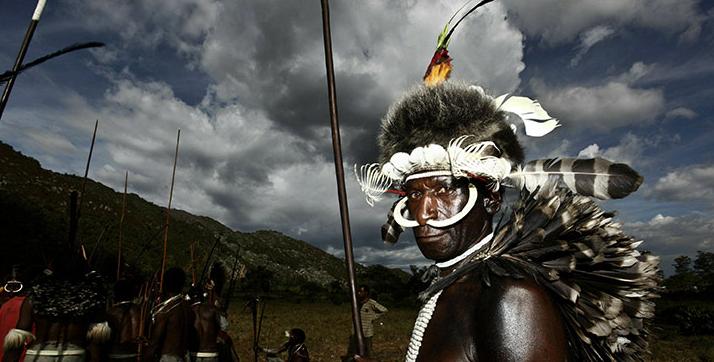
7. Sumba – Wild Savannas & Megalithic Culture
-
Why go? A stark contrast to Bali, Sumba boasts rolling savannas, ancient stone tombs, and the thrilling Pasola festival (February–March).
-
Unique experience: Stay in a traditional Marapu village and learn about animist beliefs.
-
Insider tip: Surf at Nihiwatu Beach, one of the world’s best breaks.
Step into a world where time stands still—Sumba, an untamed island of rolling savannas, towering megalithic tombs, and ancient tribal traditions. Unlike Bali’s beaches, Sumba offers raw, untouched beauty, where the Marapu people still practice animist rituals and build massive stone graves for their ancestors. Witness the thrilling Pasola festival, a ritualistic horseback battle, or surf the legendary waves of Nihiwatu Beach, ranked among the world’s best. With its wild landscapes and deep cultural roots, Sumba is Indonesia’s best-kept secret for adventurers and culture seekers.
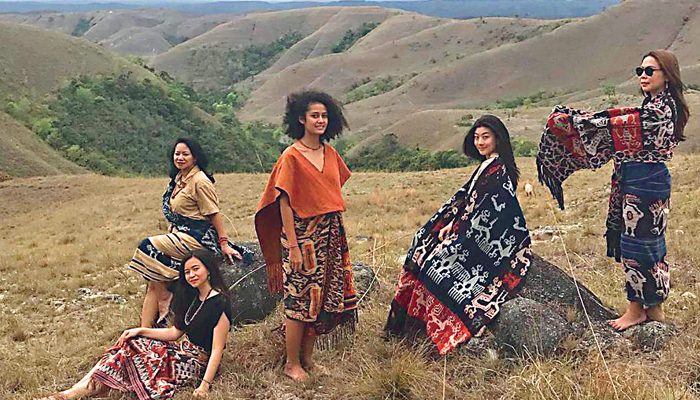 8. Activities
8. Activities
There is good diving and snorkelling off Bali (Nusa Dua, Sanur, Padangbai), between Komodo and Labuhanbajo in Flores, around the Banda Islands and off Pulau Biak off the north coast of Irian Jaya. The sea gardens of Sulawesi, particularly around Manado, are legendary. Renowned surf spots include Ulu Watu in Bali, Grajagan in Java and Nias off Sumatra, but there is surf along the southern coast of virtually all the islands in Nusa Tenggara. Windsurfing enthusiasts are well catered for in the southern resorts of Bali. Rafting is a new activity now offered on Bali’s Ayung River.Sumatra has good jungle treks, particularly in Gunung Leuser National Park. Berastagi and Bukit Lawang are also popular trekking centres in Sumatra. More adventurous jungle trekking opportunities are available in Kalimantan and Irian Jaya. For those who want to reach for the skies, Mt Bromo in Java and Agung in Bali are day climbs; Gunung Rinjani, the volcano that dominates Lombok, is a strenuous but worthwhile three-day jaunt.
- Getting There & Away
The principal gateways for entry to Indonesia are Jakarta and Bali. Jakarta is serviced by more airlines but, thanks to its huge tourist trade, Bali gets almost as much traffic. Many new airlines and airports have opened up Indonesia to travelers. Airport tax on international flights is now included in the airfare. - Getting Around
Indonesia has a variety of airlines servicing domestic routes including Garuda, Air Asia, Lion Air and many more. Each airline publishes a nationwide timetable which can be obtained from their respective head offices in Jakarta. On more popular routes, book well in advance, especially in the peak tourist season around July and August. Indonesia’s main roads are generally excellent surfaced highways. Bus departures are frequent and most buses were air-conditioned and equipped with video. Rail travel is restricted solely to Java and Sumatra. Indonesia’s trains are pretty much a mixed bag: slow, miserable and cheap or comfortable and expensive. It’s advisable to buy train tickets a day in advance to assure a seat. Cars, motorbikes and bicycles can be rented in the main cities and tourist centers. There are regular ferries between the various islands. Kalimantan has an undeveloped road system and internal transport is primarily by river or by air. Local transport includes the ubiquitous bemo (pick-up trucks with rows of seats along each side), opelets (minibuses), bajaj (auto rickshaws), becaks (bicycle rickshaws) and dokars (horse-drawn carts); most are ridiculously cheap. Many towns have taxis, but agree on a fare in advance.
Why Venture Off the Beaten Path?
Escape the crowds – No tourist hordes, just raw beauty.
Deep cultural immersion – Meet indigenous tribes and witness rare traditions.
Pristine nature – Untouched jungles, empty beaches, and rare wildlife.
Authentic adventures – From dragon treks to spice island explorations.
Ready to explore Indonesia’s best-kept secrets? Which destination intrigues you the most?

